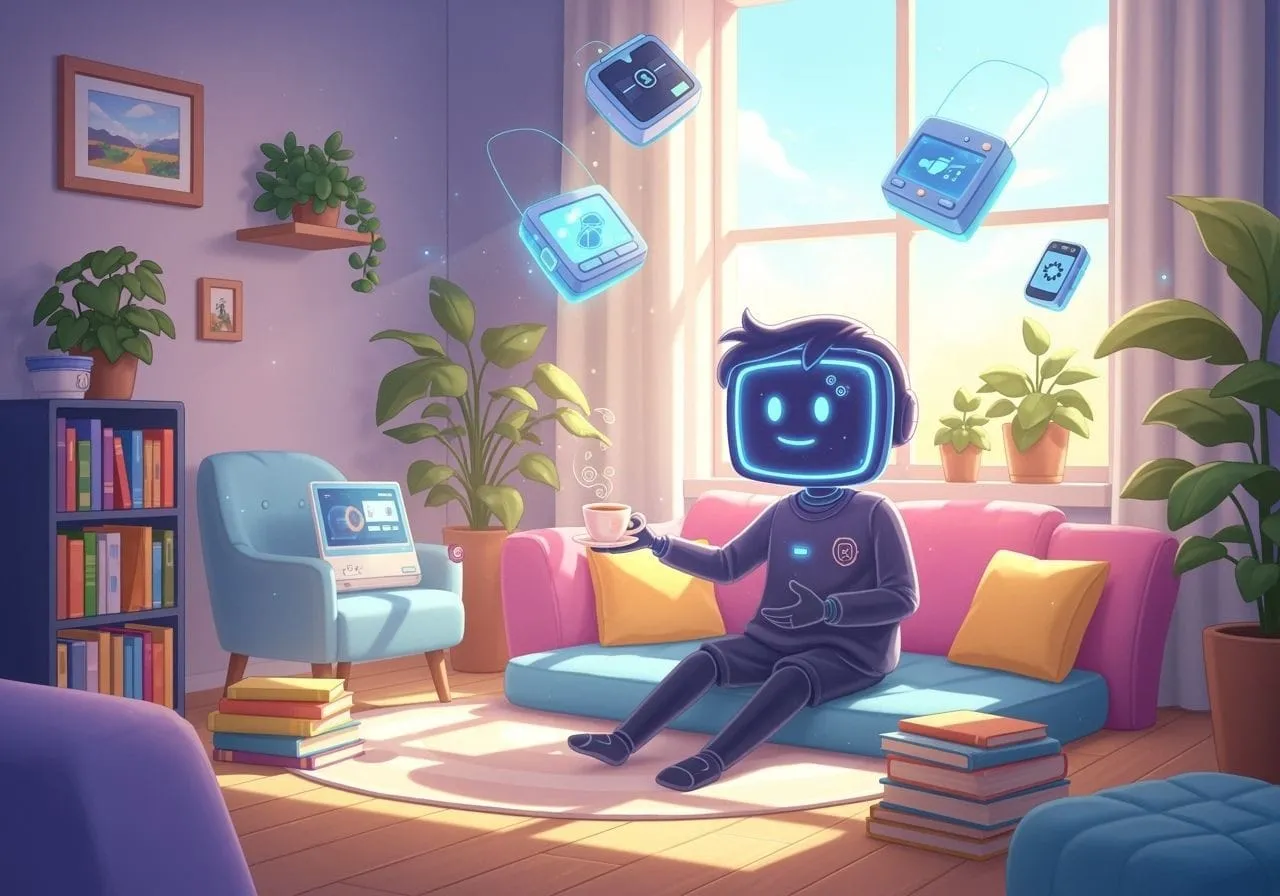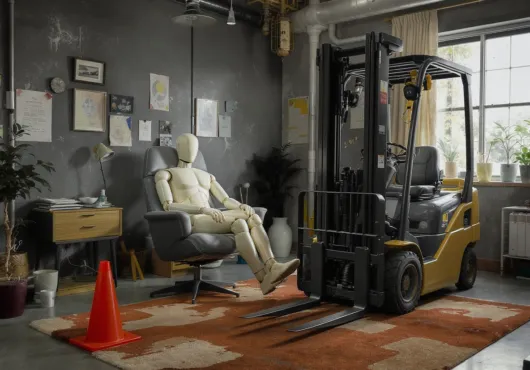The crib has a camera. The camera has an app. The app has a coach. The coach has a dashboard.
Somewhere between “goodnight moon” and “firmware update,” we outsourced the bedtime story to a system that thinks latency is a lullaby.
This isn’t a panic piece. It’s a gut check: are machines raising kids—or are we quietly teaching kids to feel raised by machines?
Like What You Read? Dive Deeper Into AI’s Real Impact.
Keep Reading- AI Parenting: Tech is shaping routines, but are we really raising kids?
- Emotional Disconnect: Kids are losing real connections in favor of convenience.
- Real Growth: True growth needs human touch, not automated systems.
The real swap: from parenting to provisioning
We didn’t hand the crown to AI. We handed it the calendar. Sleep schedules, snack timers, “enrichment” blocks—automation slid in where attention ran thin. Tools that were supposed to assist became the room temperature: invisible, constant, shaping everything.
The result isn’t “robot parents.” It’s parents calibrated by robots—nudged toward whatever the model decides is “optimal,” measured by compliance, rewarded by green checkmarks.
Metrics don’t love your kid
Optimization loves things it can count. Childhood is mostly the stuff you can’t.
Apps promise “fluency by five,” “focus by seven,” “emotional regulation by nine.” Meanwhile, boredom—the compost that grows grit—gets paved over by gamified streaks and push-notes that bribe the frontal lobe. We’re trading unstructured time for structured proof, and calling it progress because it graphs nicely.
You know what doesn’t chart?
The fight over nothing that becomes a lesson about boundaries.
The weird tangents that turn into interests.
The long, dumb afternoon where a kid invents a game with a shoebox and a spoon.
Try putting that in a dashboard.
The AI nanny isn’t evil. She’s just efficient.
Efficiency is incredible at logistics and terrible at meaning. It can sort, pace, and scaffold. It cannot witness. It cannot say “that joke landed because you finally risked being silly,” or “you’re not angry, you’re scared, and that’s fine.”
When a system “knows” your kid, it knows the taps, not the tears. It knows the pause length, not the why. If you let efficiency steer too long, you don’t get monsters—you get polished emptiness. Pleasant. Productive. Hollow.
Machine-raised vs. machine-framed
Are kids literally being raised by machines? Not really. But they’re being framed by them:
What counts as success is increasingly defined by what’s easy to measure.
What counts as “safe” is restricted to what’s easy to moderate.
What counts as “learning” is optimized into the shortest path to a quiz.
And because the framing is seamless—no villain, just defaults—kids grow up assuming the frame is reality. That’s the trick: not replacing parents, but replacing the context parents would normally set.
The boredom tax (pay it)
Boredom is the gym where attention gets strong. The more we algorithmically fill the gaps, the flimsier attention gets. We end up with kids who can perform on cue but can’t stay with a feeling, a problem, or a person.
Give them gaps. Let a Saturday be dumb. Let curiosity trip, fail, and self-rescue. That’s not negligence; that’s capacity building.
Consent isn’t a checkbox—it’s a habit
A kid who never gets to say “no” to a device won’t know how to say “no” to a system. Parenting in 2025 means teaching consent with tech, not just about tech:
Ask before you track.
Explain what the data does.
Model opting out when the tradeoff sucks.
When a child understands why you deny the bright toy, you’re not just blocking a feature—you’re building a spine.
What to automate
Automate the boring logistics: reminders, recurring lists, the calendar chaos. Cool. Buy back time.
Don’t automate the meaning-making: stories, apologies, “you okay?”, the kitchen-table autopsy of a hard day. That’s the part that turns data into a person.
If you’re going to let an app teach, sit in the room sometimes. Ask what it missed. Make the tool explain itself—out loud, to you. If it can’t, don’t promote it to “co-parent.” It’s a worksheet, not a witness.
The real risk isn’t Skynet—it’s drift
There’s no single moment where a machine “takes over.” There’s just drift. One more subscription to smooth the edges. One more dashboard to reassure you you’re doing it “right.” Then one day you realize the meter replaced your gut.
Pull the drift back on purpose:
Choose the tool for what it frees.
Keep one ritual tech-cold (walk, bedtime talk, the first five minutes after school).
Let kids practice saying “not today” to a system that wants their forever-yes.
The line that matters
Raise kids who can tell the difference between a helpful tool and a quiet boss. If they can spot the boss in the tool, they won’t be raised by machines—or convinced they were. They’ll be raised by you, with help that knows its place.



